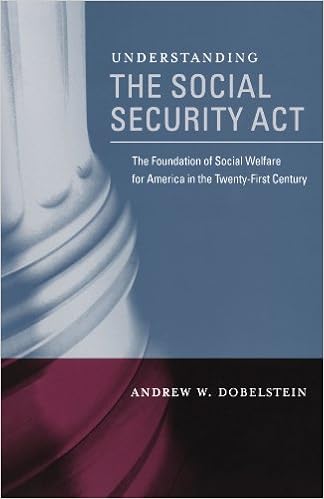Today marks the 80th anniversary of the signing into law of the Social Security Act by President Franklin Delano Roosevelt. In his Statement Upon Signing the Social Security Bill on August 14, 1935, FDR said: “Today, a hope of many years standing is in large part fulfilled…We have tried to frame a law which will give some measure of protection to the average citizen and to his family against the loss of a job and against poverty-ridden old age.”
The act survived a series of constitutional challenges to become a linchpin of retirement planning. Three Social Security cases made their way to the Supreme Court during its October 1936 term. One case, Helvering vs. Davis, 301 U.S. 619 (1937), challenged the old-age insurance program. The two others, Steward Machine Company vs. Davis, 301 U.S. 548 (1937) and Carmichael vs. Southern Coal & Coke Co., 301 U.S. 495 (1937), challenged the unemployment compensation program of the Social Security Act. The Court issued rulings on all three on the same day, May 24, 1937.
In 1965, thirty years after passage of the Social Security Act, President Lyndon Johnson signed the Social Security Act Amendments, popularly known as Medicare, a national health insurance program for the elderly. Companion legislation created Medicaid, providing health care for people on welfare. Later, Medicaid was broadened into a more comprehensive program financing health care for low-income persons. Today, Social Security retirement benefits currently average $1,335 per month. The average disabled worker and aged widow or widower receives slightly less. For 65 percent of elderly beneficiaries, these benefits provide the majority of their cash income. For 36 percent of them, the benefits provide 90 percent or more of their income. For 24 percent of them, it is the sole source of income. This leaves little room for cuts for beneficiaries.
The Brooklyn Law School Library has a wide range of practice materials related to the Social Security Act including The Social Security Act Sourcebook by ABA Publishing (Call # KF3644.581935 .A2 2013) in the Main Collection and the 6th edition of Social Security Claims and Procedures by Harvey L. McCormick (Call # KF3649 .M272 2009) on Reserve at the Circulation Desk.
 Additionally, the BLS Library has in its collection Understanding the Social Security Act: The Foundation of Social Welfare for America in the Twenty-First Century by Andrew Dobelstein (Call # KF3649 .D63 2009). With so many social welfare policy experts failing to grasp the sheer size and intricacy of the Social Security Act, this book takes readers step by step to provide the kind of comprehensive view of the U.S. social welfare system that is essential for any would-be reformers to master. Since being signed into law in 1935, the Social Security Act has institutionalized the country’s social welfare undertakings into a massive package administered by a sprawling federal agency and state-level organizations that must implement its programs. This is the first complete guide to every entitlement authorized by the Social Security Act, drawing on the author’s 38 years of research, teaching, and community service to explain in accessible, straightforward writing the origins, development, and ins and outs of their practical administration. By showing how the United States’ unique social welfare philosophy is reflected by the Social Security Act, this book provides a foundation for examining how its social welfare programs are bonded into a major social welfare enterprise. Students and scholars of policy and government, as well as public servants, whose work involves the real-life implications of the Social Security Act, will find this sweeping yet detailed overview an indispensable aid.
Additionally, the BLS Library has in its collection Understanding the Social Security Act: The Foundation of Social Welfare for America in the Twenty-First Century by Andrew Dobelstein (Call # KF3649 .D63 2009). With so many social welfare policy experts failing to grasp the sheer size and intricacy of the Social Security Act, this book takes readers step by step to provide the kind of comprehensive view of the U.S. social welfare system that is essential for any would-be reformers to master. Since being signed into law in 1935, the Social Security Act has institutionalized the country’s social welfare undertakings into a massive package administered by a sprawling federal agency and state-level organizations that must implement its programs. This is the first complete guide to every entitlement authorized by the Social Security Act, drawing on the author’s 38 years of research, teaching, and community service to explain in accessible, straightforward writing the origins, development, and ins and outs of their practical administration. By showing how the United States’ unique social welfare philosophy is reflected by the Social Security Act, this book provides a foundation for examining how its social welfare programs are bonded into a major social welfare enterprise. Students and scholars of policy and government, as well as public servants, whose work involves the real-life implications of the Social Security Act, will find this sweeping yet detailed overview an indispensable aid.
